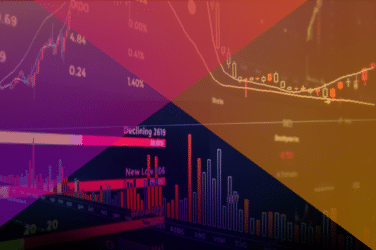
Japan’s 2011 earthquake resulted in increased trading activity, but its one-year anniversary doesn’t foreshadow the same frenzy.
In recent post-financial crisis years, traders have been sullenly forced to accept lower trading volumes. Traders reveled in a great volatility spike from the fall of 2008 to 2009 as the collapse of Lehman Brothers pushed fear into the markets. But, the U.S. has shown a slight decrease from $10 billion shares traded in 2009, to just over $6 billion this year.
Japan, Asia’s most developed market, suffered their version of macroeconomic calamity in its triple threat earthquake/tsunami/nuclear disaster, which led to a post Lehman-like spike in turnover as traders weaved their way in and out their positions in Japan.
Last year, turnover in Japanese derivatives contracts surged by nearly 40% during the March 11 week of the earthquake, versus 4% of global derivatives, according to the Bank of International Settlements. Needless to say, hedges were in play. Trading volumes since then have flattened.
Certainly, the Japanese yen went up by 29% which was mostly due to short-term trading during the same period of time. A rise in local currencies demonstrated an ever-present imbalance in exports and imports, as Japan has always been a heavy importer, a key economic characteristic that has possibly stunted the country’s economic growth historically for more than 10 years.
“If the yen can weaken, then Japan will be off to the races,” said Neil Hennessy, chief investment officer and portfolio manager for Hennessy Funds, a provider of traditional mutual funds that have Japanese mandates. “It’s three hours from emerging Asia, where countries such as India and China, which has a rising middle class and a population in excess of 1.3 billion people, having a growing middle class.”
Yet, traders, especially those looking to make money off of short-term plays in Japan will be disappointed, Hennessy told Markets Media. “What you want to have is a long-term view,” he said.
Like the rest of Japan’s story, the country’s market structure needs to develop on a domestic front. The Land of the Rising Sun also imports its local market structure. The shift towards more automated, faster, lower latency trading is still very much reliant on foreign firms.
“Most of global broker-dealers operate smart-order routers in Japan, while there are only a handful of domestic firms with smart-order routing technology,” said Michael Kim, head of electronic trading at Barclay’s Asia-Pacific division, who noted that Barclay’s is currently in the midst of localizing their dark pool, Barclay’s LX.
Whether localizing any alternatives to Japan’s major exchanges will have much success remains to be seen as because the exchange’s major counterpart, the proprietary trading system, has reportedly very low market penetration. Local institutions, such as domestic pensions, and traditional mutual funds are only allowed to execute order on Japan’s primary exchanges, such as the Tokyo Stock Exchange, and Osaka Stock Exchange, which have announced a pending $37 billion deal to merge, last fall.
Before any buy-side mandates would be altered to include alternative trading venues, proprietary trading systems may need to significantly decrease their execution costs, as they’re currently more expensive to utilize than the exchanges.
Dark venues account for only between 1 to 2% of market share, according to a Barclay’s Capital report. Many of these are internationally (U.S and Europe) operated, and cannot exceed more than 10% of volumes.
Hennessy told Markets Media that the vehicles in which Japan can be accessed by foreign investors is unimportant, but rather, that investing in those with local knowledge within the mutual fund arena, is the best case scenario. Hennessy Funds currently sub-advises its Hennessy Select SPARX Japan Fund and its Hennessy Select SPARX Japan Smaller Companies Fund.
“You’re better off with a mutual fund if you want to get exposure to Japan, versus an ADR (American depository receipt),” Hennessy noted, and told Markets Media that daily traders should pay attention to the local funds on the ground. “By design, we sub-advise our asset management in Japan because I can’t get a feel for the markets on a day-to-day basis. We’re very fortunate to have top management in Asia watching out for us on the ground.”
For now, investors will continue to follow a typical, exchange-dominated trajectory when it comes to Japanese trading as domestic buy-side firms, sell-side players and regulators continue to work out processes of the country’s capital markets.
Unlike in other countries, there is no single umbrella capital markets regulatory framework in Japan, such as the U.S.-based Regulation NMS, put forth by the Securities and Exchange Commission (SEC), and the European Union’s Markets in Financial Instruments Directive (MiFID).
Recently, the Financial Services Agency, Tokyo’s local regulator has put out a Collective Investment Schemes to try and provide better opportunities for alternative venues, such as SBI Japannext, and Chi-X Japan Ltd. The latter is owned by Canadian-based broker-deal Instinet, which is ultimately owned by Japanese-based Nomura Securities.





